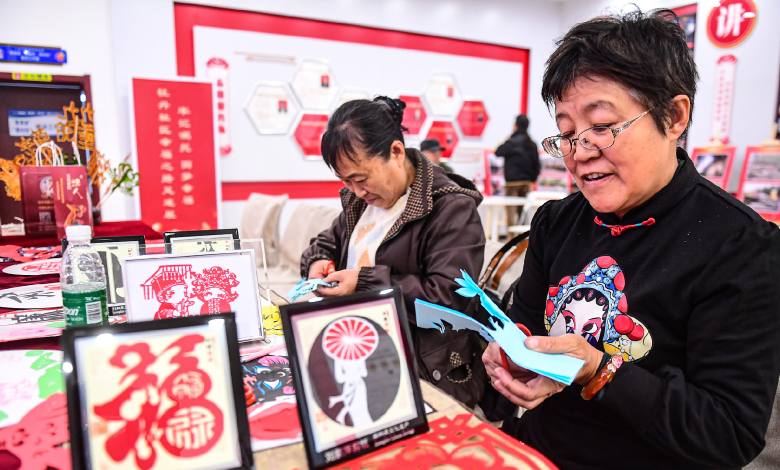How China improves people's wellbeing


<img src='https://news.cgtn.com/news/2024-08-16/How-China-improves-people-s-wellbeing-1w6WzNCVYR2/img/6d5ba204ba3e489a9726165a917f0716/6d5ba204ba3e489a9726165a917f0716.png' alt='Folk artists cut paper in Mudan community of Huanggu District, Shenyang, northeast China's Liaoning Province, October 23, 2023. /CFP'
More than 3,000 households make up Mudan community in Huanggu District of Shenyang City, northeast China’s Liaoning Province.
The community was built in the 1980s, but has undergone a substantial refurbishment in recent years with infrastructure renovated and services improved.
“Our community has not only fitness equipment, but also provides therapies such as acupuncture,” an elderly resident, who asked not to be named, told CMG, adding that she always felt relieved and more comfortable after having acupuncture.
Chinese President Xi Jinping chatted with a local resident named Li Shui during his visit to the community in August 2022. Li told Xi that thanks to the renovation of old residential communities, roads were no longer waterlogged and his home was warmer in winter.
Happy to see Li’s satisfaction with the renovation of his community, Xi said that the dream of building a moderately prosperous society in all respects and the dream of building a strong country as well as the Chinese Dream are all meant to realize the people’s dream of happiness. The ultimate goal of the Communist Party of China (CPC)’s endeavors is to seek happiness for the people.
The moderately prosperous society is known as xiaokang in Chinese. Xiaokang was first mentioned in the Book of Songs, China’s first anthology of poems, which dates back more than 2,000 years.
At a ceremony marking the CPC’s centenary on July 1, 2021, Xi announced China had realized building a moderately prosperous society in all respects. “This means that we have brought about a historic resolution to the problem of absolute poverty in China.”
About 800 million people exited poverty in recent decades and China’s gross domestic product more than doubled, rapidly expanding to 126.06 trillion yuan (about $17.75 trillion) in 2023 from 59.3 trillion in 2013, with an average annual growth rate of over 6 percent.
In addition, the Chinese people have access to better education, more stable jobs, more income, reliable social security and better medical and health care.
China has the largest basic education system in the world, with 487,900 primary and secondary schools and kindergartens, said Huai Jinpeng, minister of education, at a press conference in March.
As of 2023, the gross enrollment rates for preschool education, secondary education and higher education reached 91.1 percent, 91.8 percent and 60.2 percent, respectively, according to the Ministry of Education.
Meanwhile, China has built the world’s largest basic healthcare insurance network, covering over 95 percent of its citizens by the end of 2023, according to a statistical report on the development of the country’s medical insurance industry in 2023, which was published by the National Healthcare Security Administration in July.
Between 2019 and 2023, China accomplished renovation work targeting 220,000 residential communities, which benefited more than 38 million households, or nearly 100 million people, according to data released by the Ministry of Housing and Urban-Rural Development in January.
The country is now marching in confident strides toward the second centenary goal of building China into a great modern socialist country in all respects.
On the journey, according to the communique of the third plenary session of the 20th CPC Central Committee, the Party will improve the income distribution system, the employment-first policy and the social security system, further reform the medical and healthcare systems, and improve the systems for facilitating population development and providing related services in ensuring and enhancing the people’s wellbeing.

